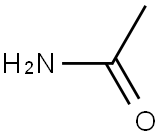ACE possesses dual actions to convert Ang I to Ang II,
and degrade bradykinin. The development of an ACE inhibitor was the first effective drug for hypertension caused by
high renin activity. ACE2 was identified as the receptor
for the SARS (severe acute respiratory syndrome) coronavirus, which caused an epidemic in 2002–2003. ACE was discovered in the mid-1950s through the
observation that the dialysis of plasma and kidney extract
with water and saline before incubation produced two separate pressor substances, Ang I and Ang II, respectively. It
was discovered for a second time in 1966 during the characterization of a bradykinin (BK)-degrading enzyme from
the kidney. This was named kininase II, which later was
found to be the same enzyme as ACE. ACE2 was discovered in 2000 when two independent research groups
cloned homologous ACE that could convert Ang I to
Ang1–9 and yet also be captopril-insensitive.

